I’ve been intrigued with the idea of going as far as possible on a personal watercraft with the least amount of stops – be it for fuel, food or otherwise – for a good while now. This pet notion had me considering quite a few different routes on which to take. Candidates usually included some variety of water conditions, scenery and other topographical challenges – but clicking off as many miles in a single day was always the core goal.
Simultaneously, I’ve been tinkering with different forms of auxiliary fueling systems that would extend my day’s travel. Not since the days of Steve Friebe’s gorgeous hand-fabricated stainless fuel tanks back in the late 2000’s had I seen a self-siphoning kit that piggy-backed on the factory fuel system without any cutting or permanent modification. Unlike Friebe’s system, which occupied the front storage bin, I began developing a one-size-fits-all rack system as well as fool-proofing the plumbing.
As the auxiliary fuel system works off of the factory fuel tank’s ventilation system, it would work with all 4-stroke Kawasaki JetSkis and Yamaha WaveRunners; Sea-Doo was a different animal. Sea-Doo ventilated its fuel tanks via a vent line to an outside breather until 2012, when Sea-Doo switched to a “closed circuit” system, meaning a ventilated gas cap – leaving me no vent line to interrupt.
This means that the auxiliary fuel system would not work on 2012-up Sea-Doos without radically replacing several key components – and I wasn’t going to ask people to do that. Again, this kit was designed for a quick-and-easy installation and removal; I wanted a 60-year-old woman to be able to install this by herself on her trailer – and asking her to remove the factory belly tank to change out the sender/pickup was out of the question.
Satisfied with my working prototype, it was time to put it to the test. First, I chose Kawasaki’s 2020 STX 160LX. The Recreation segment runabout has the largest fuel capacity of its competitors. Equally, being naturally-aspirated offered me the greatest potential for distance, a major factor for today’s long distance cruisers. For a test flight, I opted to pin the throttle to its stops one cool July morning and sprint east, up Old Hickory Lake all the way until Cordell Hull Dam and back.
The dash went without a hitch, totaling an impressive 192-miles roundtrip. And yes, that was accomplished using just the fuel I took with me – excluding the twin Rotopax jerry cans I carried for emergencies. With over 20-and-a-half gallons in the Kawasaki’s belly and another 13-and-change on the transom, I managed a respectable 59.2mph. While this proved the system worked, the relay race to the dam and back didn’t scratch my desire for a truly memorable one-day distance record.
I mapped a pretty basic route from the base of Old Hickory Lock & Dam in Hendersonville, Tennessee (not too far from my home) running the Cumberland River – past Nashville’s riverfront – up into Lake Barkley, Kentucky. From there, I’d pass through the canal splitting the Land Between the Lakes taking me into the Tennessee River. From there, I’d run south to Paris Landing in Buchanan, TN, some 220-miles away. From there, I’d turn right around and head home. Easy, right?
Rising well before dawn, I drove to the narrow launch downstream of Old Hickory Lock & Dam. Cicadas buzzed, whirling the cool morning air. Completely isolated from any signs of life, I loaded up the Kawasaki with some final provisions, pushed the Ebony Black-and-Metallic Green JetSki from the silty shoreline and pinned its 1,498cc four-cylinder to its throttle stop. Early morning gnats clouded the air just above the water, so I donned a fabric Hoorag to protect at least half of my face from spatter.
At wide-open-throttle, the heavily-laden Kawasaki couldn’t push beyond 58mph, which was expected. As the rear tank began to drain – reading its integrated fuel gauge required twisting around for a rearward glance from time to time – the JetSki leveled to its natural plane and picked up speed, which also was expected. I sped past the historic General Jackson paddle wheel-driven riverboat and rounded the corner, bringing downtown Nashville into view.
Besides a few early morning joggers, the waterfront was wholly void of life. Certainly, the sight of me streaking past aboard a bright green JetSki at nearly 60mph was something to behold – and hopefully served as some watercooler fodder for those commuters who passed on bridges overhead. Beyond that, the Cumberland River Valley is absolutely stunning; alternating from rolling farmland to high-reaching cliffs and dense timberline. It’s Southern splendor at its best.
Prior to arriving at Cheatham Dam, I had passed a couple of tugs pushing flat-bottomed barges heavy with dredged river rock. The wake they kicked up was substantial, and playfully launching over their swells was out of the question given my auxiliary system. Instead, I smartly read the pattern and sluiced through the waves, reducing my airtime as much as possible.
Locking through Cheatham took a scant 15-20 minutes, something which I had not expected. The lockmaster happily waved me in and chatted me up as I tied to the buoys. “How far you headed?” he bellowed over the railing. Replying “Paris!” he leaned further over the railing to draw closer. “You serious?” he yelled back. Nodding in the affirmative, he laughed and bid me good luck. When I assured him that I’d be back in a couple of hours after lunch he simply stared back incredulously.
West of Cheatham Dam was pretty much unbroken smooth sailing all the way into Barkley Lake, about an hour and a half down river. As I said before, I kept the Kawasaki pinned to its throttle stop the whole time – both because of time and to measure the ski’s fuel consumption.
Thus far, I managed a maximum top speed of a hair under 60 miles per hour – although the speedometer in the Kawasaki’s dashboard would have us believe we’re running 65. (The paddlewheel gauges were never all that accurate.) I also kept the Cruise Control off since I ran into so many more barges, and smartly throttling past them to maintain speed and not launch myself over the bars takes a little more finesse.
By this time, I was calculating about 5-and-a-half miles per gallon at wide-open-throttle, which was on par with what I planned for. Doing a little mental arithmetic I started thinking I could push past the fuel stop I had planned at the Green Turtle Bay resort and all the way to Paris Landing – some 30 miles south, and what I would discover, much too far for my ski to make with what fuel I had.
Interestingly, at this portion of the Tennessee River it flows north emptying into the Ohio River. With increasing winds churning the water into 2-to-3 foot chop; charging against the current; and my scant fuel supply, the Kawasaki’s alarm bells quickly began to chime. Convinced of my mental arithmetic, I fool-heartedly emptied my emergency Rotopax cans into the auxiliary tank and resumed the charge south. Again, the alarms rang, but with nearly 7-gallons in the rear tank.
Here I discovered a major issue with my fuel system: if the ski’s fuel cell is empty (full of air) it won’t produce the vacuum to siphon the gasoline from the auxiliary tank. Had I poured the fuel into the fuel cell, it wouldn’t have been a problem; but with the fuel cell nearly dry, it couldn’t generate the vacuum necessary. I was in trouble now, I thought. Frustratingly, I had missed my last chance for gas some time ago, so now desperate, I idled towards a cove of waterfront homes hoping for sanctuary.
“You’re outta gas?” a friendly face queried, looking over my rear tank setup. “Well, if you can make it another 300-feet, you’ll run into Leonard’s. He’s got gas, but it ain’t cheap.” Well, “Leonard’s” was the Lynnhurst Family Resort, a waterfront cabin experience, where families could engage in boating and kayaking on the river. Nearly bone-dry, the Kawasaki swallowed an impressive near-40 gallons of fuel (setting me back $146), but gratefully, I was back in business.
Both the Kawasaki and myself properly refreshed, the sprint to Paris Landing took little time. Marking my location, I turned around quickly and reversed my course. Considering that a gallon of gas weighs 6-pounds, I had roughly 140-pounds of extra weight on the back of my ski. And without trim control to force the nose down, I finding that the only way to keep the Kawasaki from porpoising is to stand up and lean as far forward over the bars as I can.
But this doesn’t do any bit of good now because Hurricane Hanna had worked its way up from the Gulf of Mexico and was starting to make its way – now as a tropical storm – into Tennessee. Gray skies and high winds whipping the trees were churning the Tennessee River into a choppy nightmare. It took about 40 minutes of brutal riding to reach the opening of Barkley Canal and all of my patience, but with the river narrowing and the high hills blocking the storm, the way back should be pretty smooth sailing from here on out.
Learning from my severely over-confident calculations earlier I made it a plan to splash a few gallons into the rear tank at Clarksville Marina. The belly tank was about three-quarters full, but an extra 12-13 gallons provided me all of the fuel I need to make it home (even with a little extra fuel to spare, just to be safe. I promise I learned my lesson). At the opening of the Clarksville Marina is Freedom Point in Liberty Park, and is a really standout point of interest on the riverfront, somewhere I plan to visit again soon.
By this time, I noticed a whole lot more barge traffic in the afternoon than in the morning – including waiting nearly 45 minutes for one to vacate the Cheatham Dam & Lock. I took the time to stretch my legs, reapply some sunscreen, and choke down my third energy bar with the aid of a luke warm bottled water. When I asked the lock master regarding the increased traffic, he said that the barges were scrambling to find mooring before the storm hit – which made sense.
Then again, that also meant having to weave around these big ol’ things without scrubbing too much speed. If you’ve ever tried to pass a tug pushing a couple of barges down a narrow river, you’ll know what kind of wakes I’m talking about. You can quickly find yourself airborne or complete submerged in a matter of seconds. Thankfully, even as I maneuvered the Kawasaki around them, I could weave through the steep rollers with reasonable ease.
Above me the skies continued to gray and the tops of the trees began to bow under the wind. The storm was coming and I had about an hour left to make it home. I wasted no time blowing past downtown a second time, leaving many fishermen befuddled at what they saw – and likely a little irritated. The final stretch of the Cumberland serpentines through a deep channel littered with homes, parkland and farms before exposing the broad face of the Old Hickory Lock & Dam.
In all, the final tally was 443-miles with a moving average of 47.6mph (including slowing down to pass barges and locking through dams), and a maximum speed of 60.1mph. Equally, I burned through just over 60-gallons of fuel, given my calculated average of 5.5 miles-per-gallon. Needless to say, without my poor calculations, I could’ve saved myself the extra 3-miles and made it a nice, even 440. Maybe next time.







































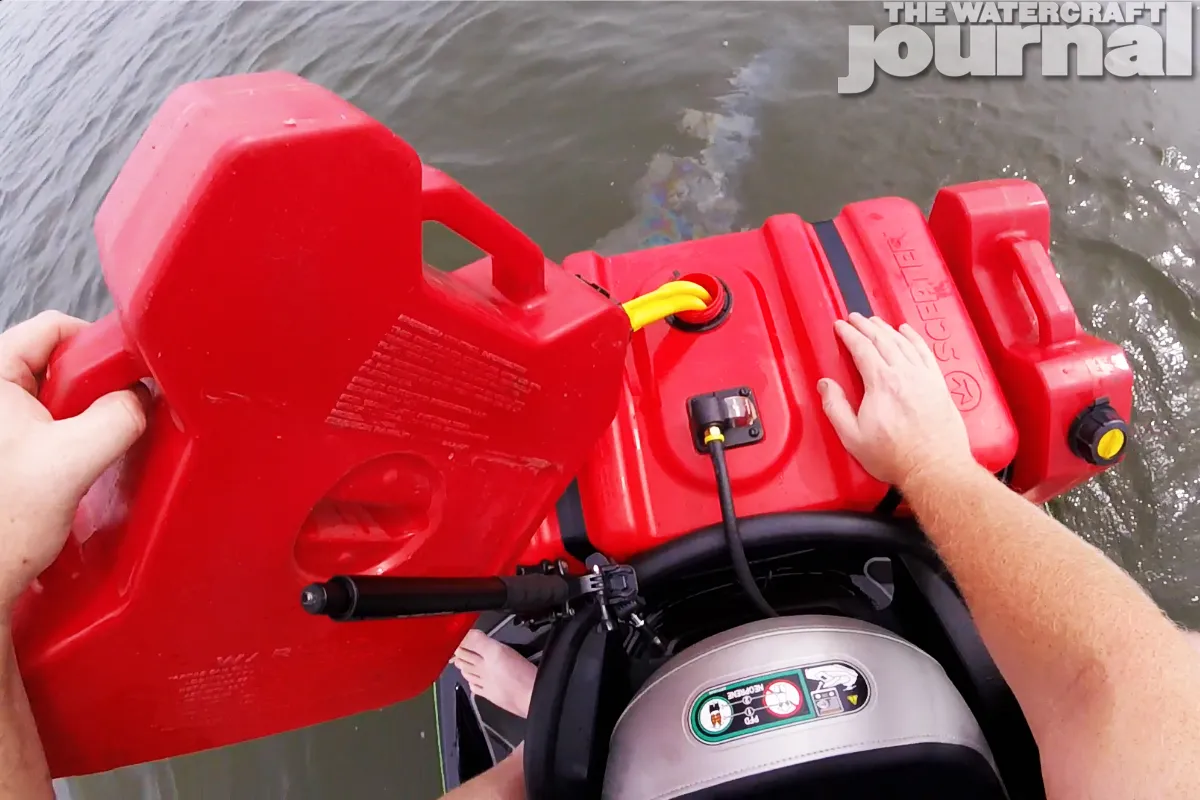

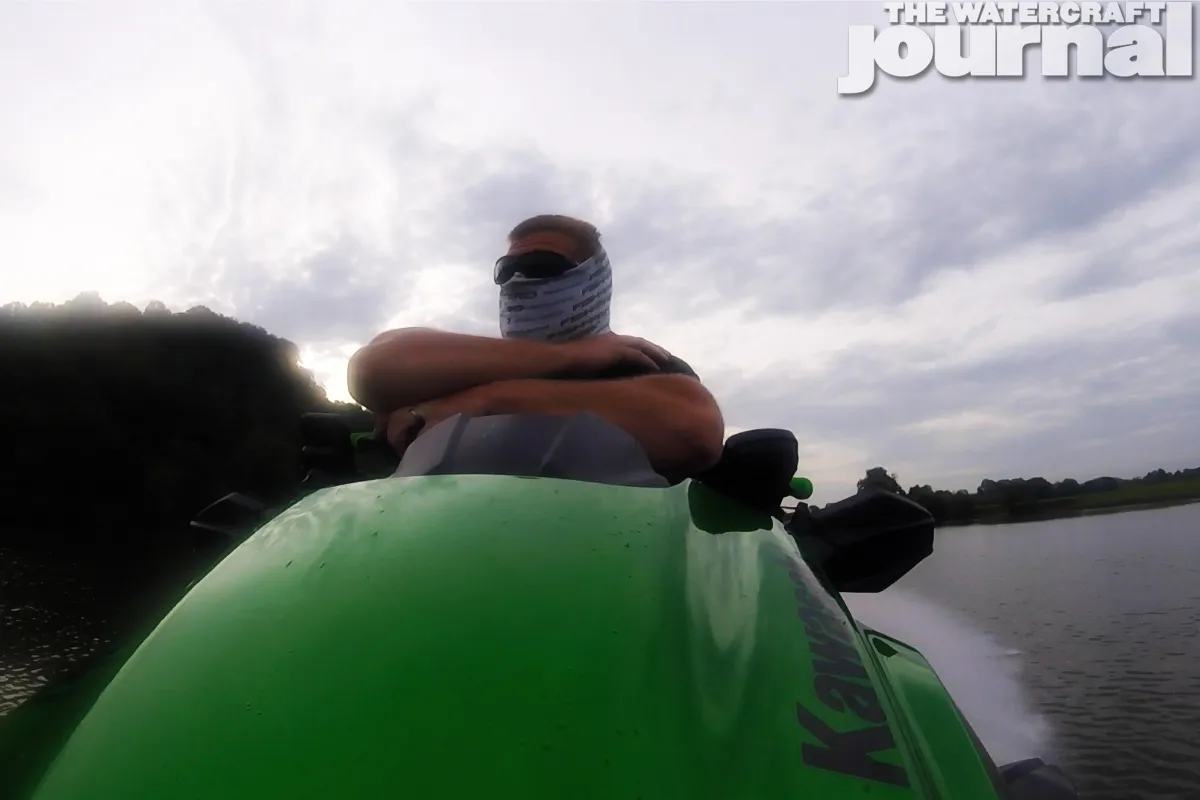




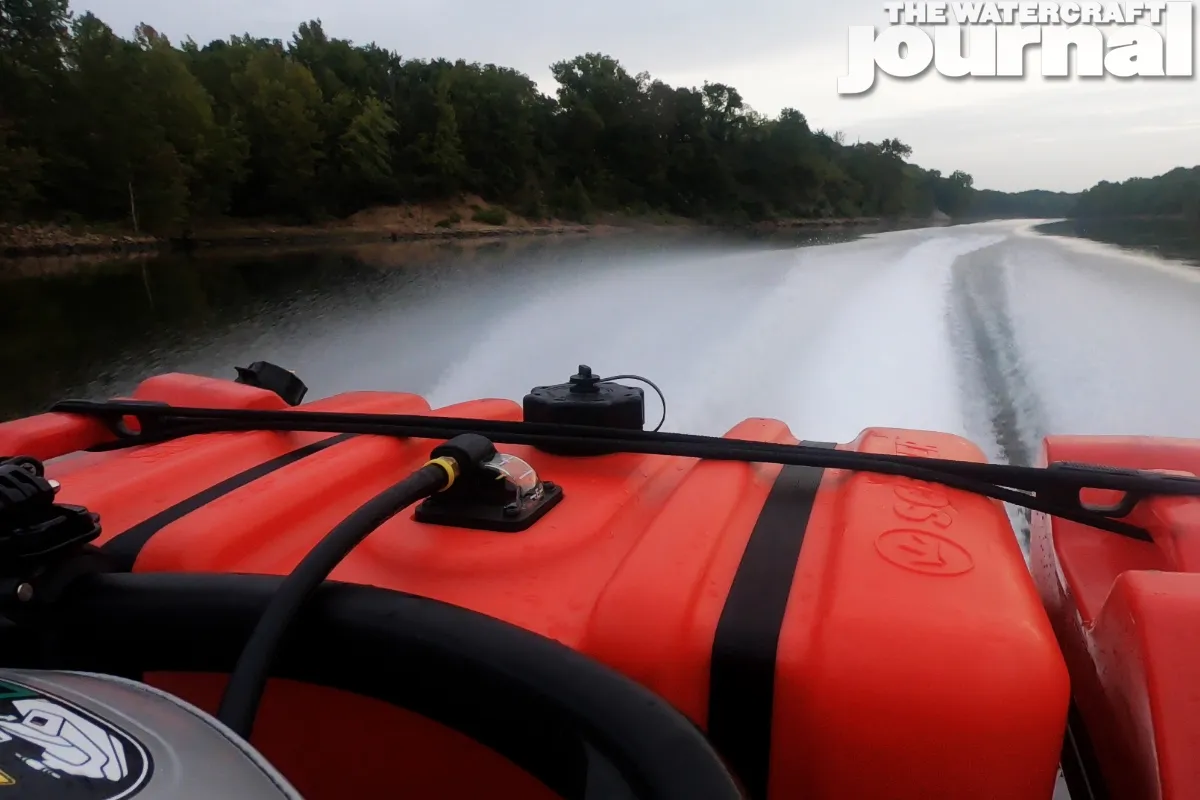
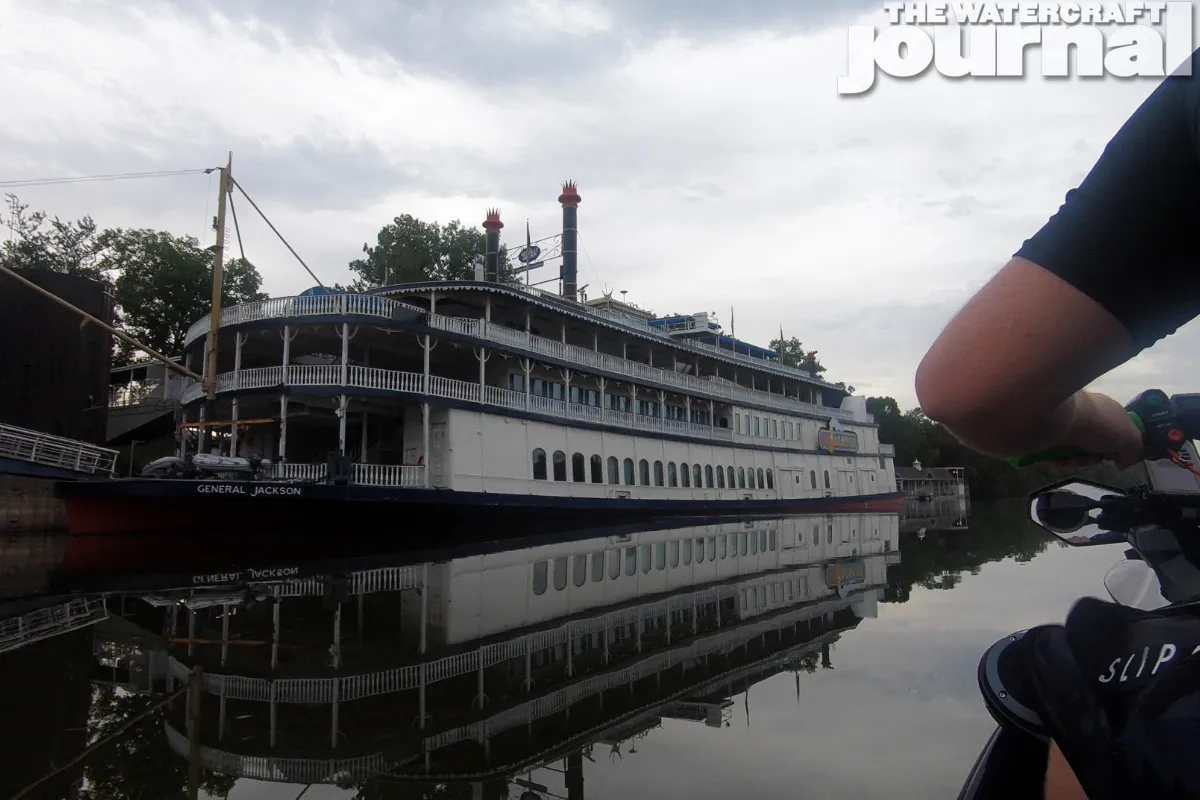











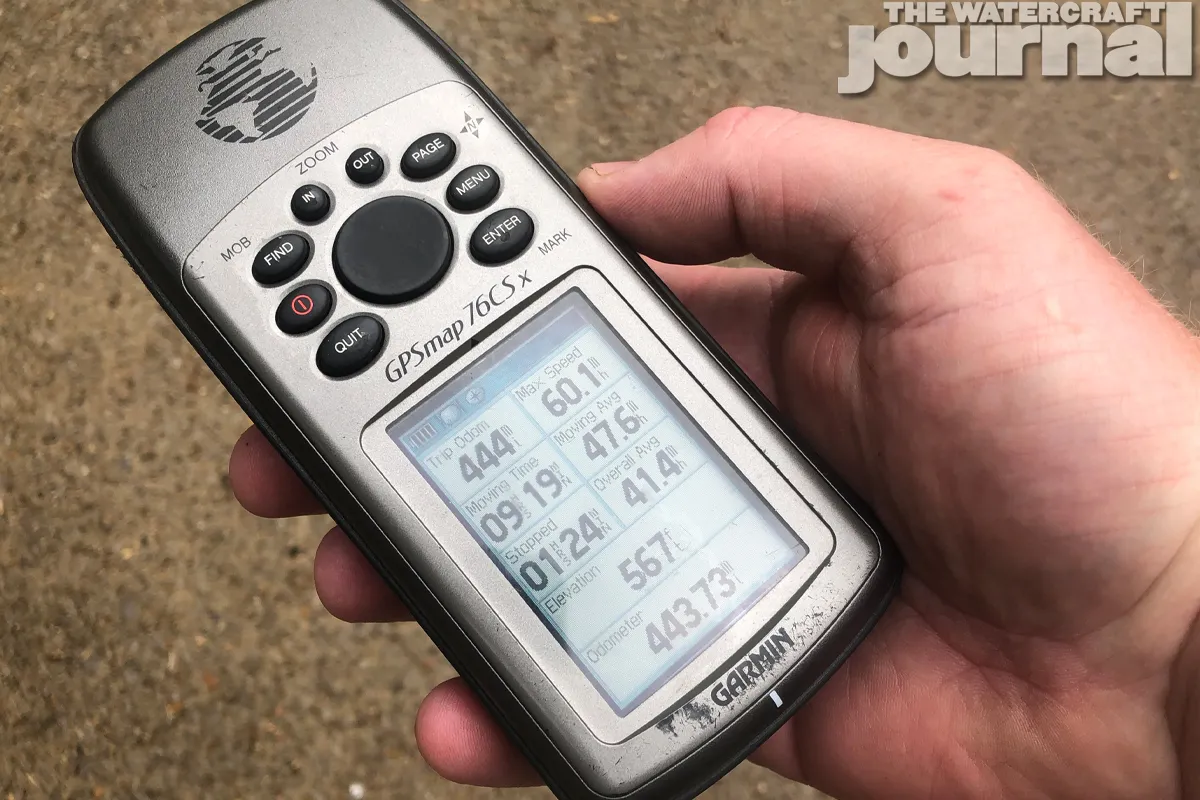


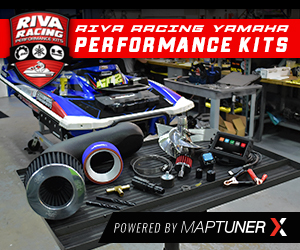

That is an impressive run. I have never been on that waterway but really want to. Heckuva solo trip!
Amazing journey !!! Very good pictures and video. Thanks for shared.
Looks like it was a tiring day. That’s a lot of riding. I would imagine that going without the heavy external tank and having the ability to refuel at more locations (perhaps with a refueling chase team) would allow for a slightly higher top speed and might stretch the total distance. Good choice on going with a normally aspirated ski — a supercharged one would have put fuel consumption into the “I can hear it sucking the gas” category. The extra 10 MPH probably isn’t worth it. I wonder if something like the much lower horsepower Yamaha VX Cruiser would be able to get more miles in a day in spite of the slightly lower top speed? At some point you’d want to limit how many hours to ride — date and latitude could be a factor because places like lower Alaska in the summer are looking at roughly 20 hours of sunlight.
[…] of being the bob weight at the end of a metronome. It also means that at speeds below 40mph, the ski tends to teeter-totter left to right (the behavior evens out with more […]